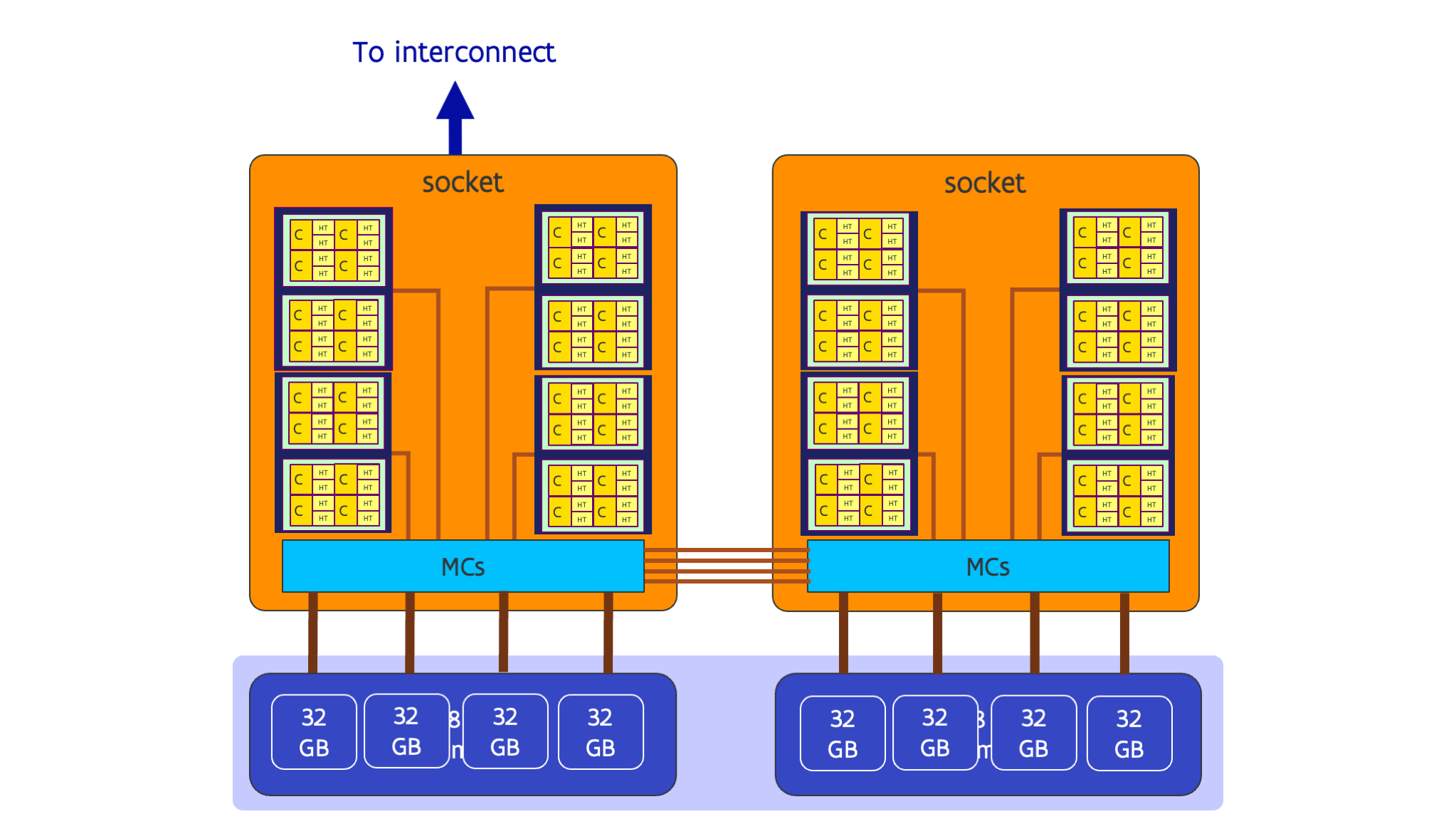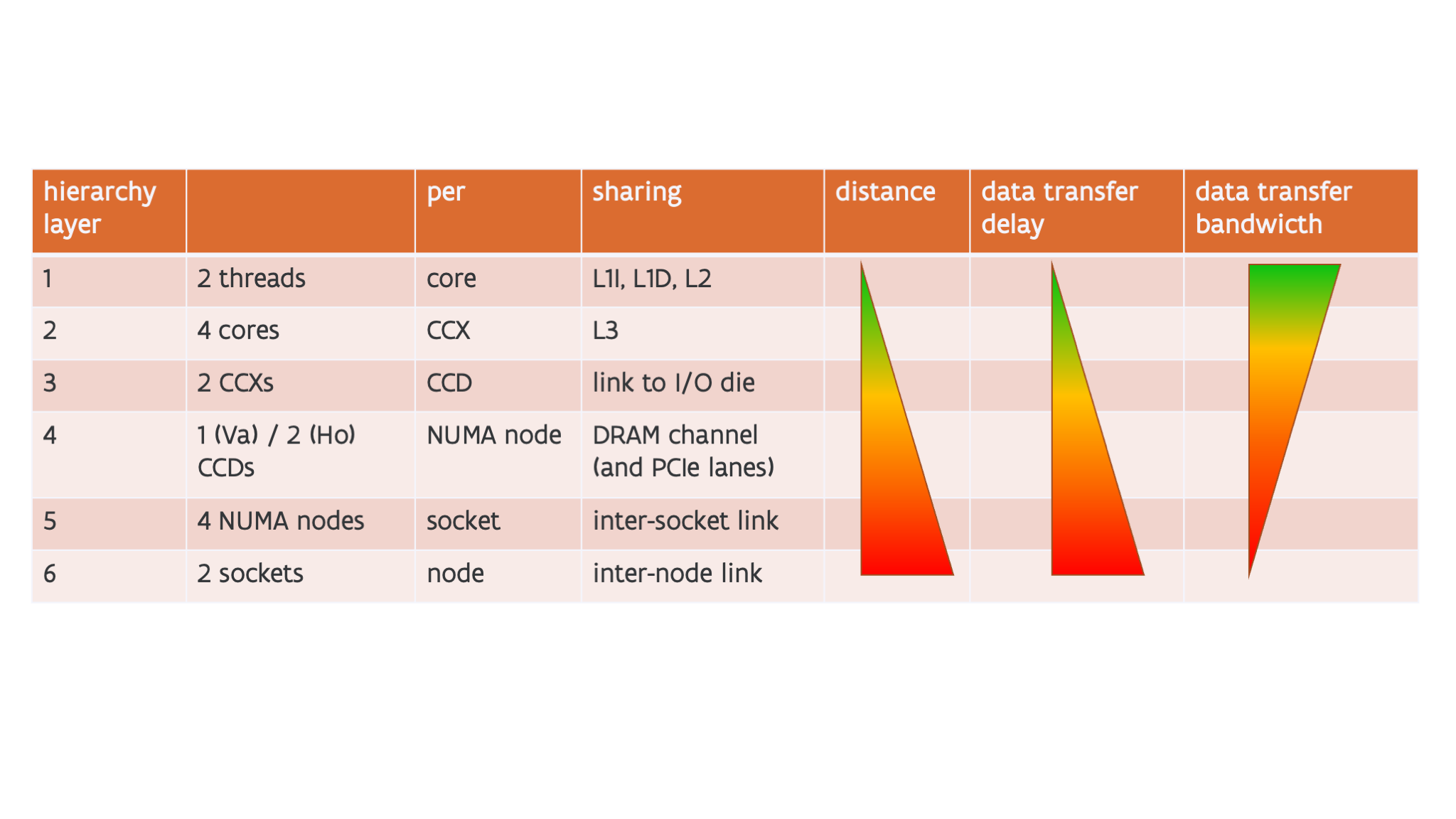AMD Rome revisited¶
The older nodes of the UAntwerpen cluster Vaughan, the VSC Tier-1 system Hortense and the login nodes and data analytics nodes of the European pre-exascale supercomputer LUMI are equipped with AMD Rome processors. These CPUs have a very complex hierarchy:
The picture below depicts the one of the older nodes of the UAntwerpen cluster Vaughan with 2 32-core AMD Rome generation CPUs:

Each socket in the 32-core version has 4 chiplets with 8 cores each (those chiplets are also called the CCDs) and one I/O chiplet. Each CCD has two groups of 4 cores the L3 cache is shared within a group but not between groups. These groups of 4 cores are also called a CCX or core complex. The two CCXs on a CCD share the connection to the I/O die with the memory controllers. Each I/O die has 4 memory controllers, and each CCD has its preferred memory controller through which memory access is slightly faster. I.e., we have a mild NUMA architecture on the socket.
The picture for the 64-core variant used in many large supercomputers is not that different. In that variant there are 8 CCDs with 2 CCXs each, and each CCD has its own connection to the I/O die, but there are still only 4 memory controllers, now with 2 preferred CCDs or 4 preferred CCXs each.
All this leads to the following hierarchy with up to 6 levels:

-
Each core supports two hardware threads. These two threads share the L1 and L2 caches. They are very close together and can communicate through those caches resulting in a short transfer delay and high data transfer bandwidth.
-
There are 4 cores per CCX, and these cores share the L3 cache. This puts them a little further apart, where communication now has to go all the way up to the L3 cache.
-
There are 2 CCXs per CCD. These two CCXs share a link to the I/O die.
-
When using NUMA-in-a-socket (typical for HPC systems), there is only one CCD per NUMA domain in the 32-core variant (so not really an extra level) but 2 CCDs per NUMA domain in the 64-core variant. They share a memory controller with 2 64-bit lanes to memory. They also share some PCIe lanes but that is less important in this context.
-
4 NUMA nodes share a socket. These NUMA nodes also share a connection to the second socket (though technically speaking the situation is a bit more complex and too complex for this course).
-
At the last level, a node has two sockets. On Vaughan and Hortense the two sockets share the inter-node interconnect.
The further one moves down along this list, the higher the distance between executing threads, so the lower the bandwidth at which they can communicate and the higher the latency.
To get good performance on AMD Rome processors, it is important to map the application properly onto this hierarchy. If not, very erratic performance is possible and we have seen huge performance differences between runs. The problem is that what is a good mapping, depends on the application and we have no way to give a recipe that works for every application. You need to understand the behaviour of your application to do a proper mapping and it depends a lot on how your code accesses memory.